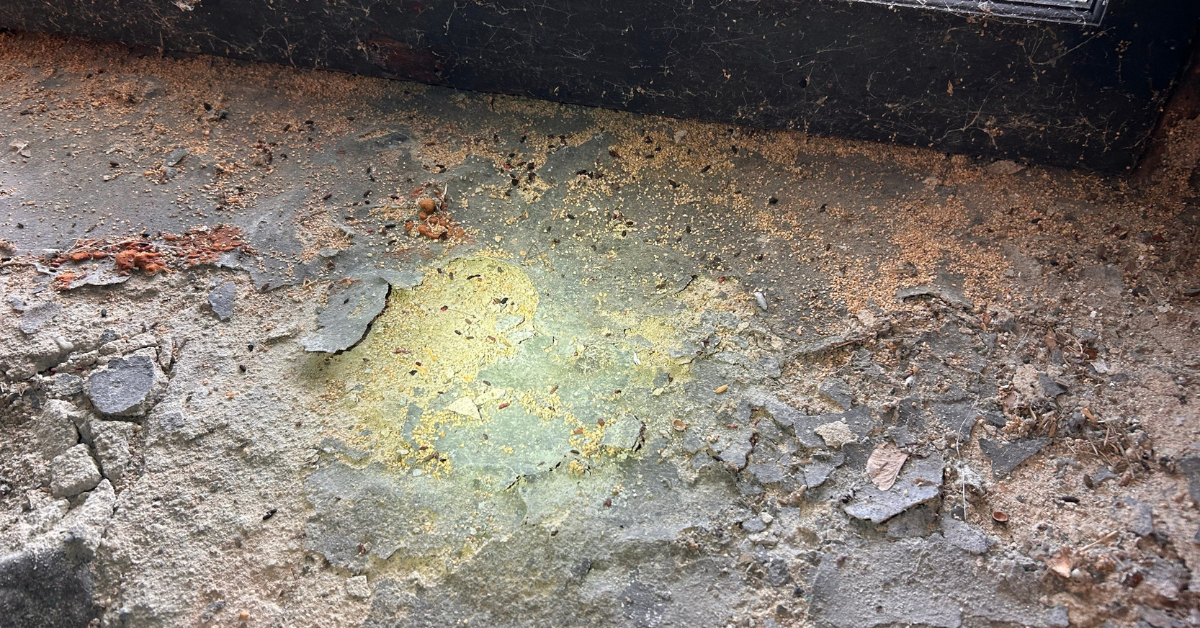Why Do Insects Swarm?
Swarming insects can be a dramatic sight. Whether it’s a buzzing cloud of flies or a sudden cluster of ants, many homeowners understandably get alarmed. But what causes swarming, and why does it happen so suddenly?
We’re breaking down the reasons behind insect swarms, which pests are known for this behavior, and why it matters—especially for upstate New York homeowners.
What Is Swarming, Exactly?
Swarming is when large groups of insects suddenly appear and move together. It's most often associated with reproduction, defense, or migration, depending on the species. While some swarms are harmless (even beautiful to watch, like butterflies), others can pose serious risks to your property or safety.
3 Common Reasons Insects Swarm
Reproduction
For insects like termites, ants, and some bees, swarming is all about reproduction. Colonies release winged reproductive members—known as alates—to mate and establish new colonies elsewhere.
These swarms are often triggered by environmental cues such as:
- Temperature changes
- Humidity
- Wind conditions
- Daylight duration
Because neighboring colonies respond to similar cues, there’s a better chance that alates from different groups will find each other and reproduce. That’s why swarming tends to happen suddenly and all at once—especially in the spring.
Defense
Stinging insects like wasps and honey bees may swarm when they perceive a threat to their nest.
In some cases, it doesn't take much to trigger them. For example, honey bees can become aggressive if someone is stung nearby. That’s because a bee sting releases a pheromone that signals other bees to attack the same target.
So, if you're stung by a bee, don’t stick around—you could quickly become the focus of the entire swarm.
Migration
Not all swarming is aggressive or reproductive. Some insects swarm to migrate long distances in search of better conditions.
Insects that may migrate in swarms include:
- Butterflies (like Monarchs)
- Moths
- Dragonflies
- Grasshoppers
- Beetles
These migrations can span hundreds of miles and are often tied to seasonal changes, particularly in fall and early winter.
Which Insects Swarm?
Here’s a quick list of common insects that swarm:
- Termites
- Ants
- Gnats
- Mosquitoes
- Wasps
- Bees
- Mayflies
- Locusts
- Butterflies
- Moths
- Dragonflies
- Beetles
- Grasshoppers
While the reasons and timing vary, each of these pests has the potential to create large, coordinated swarms under the right conditions.
When Does Swarming Happen?
In our region, most insect swarms start when the weather begins to warm—typically in the spring. That’s when reproductive insects take flight, mosquitoes start breeding, and stinging pests become more active.
Depending on the species and weather, you might see swarming activity as early as April, and continuing through late summer.
Why Swarming Is a Problem for Homeowners
While swarming is a natural behavior, it can lead to big headaches if it happens near your home. Some of the most common issues include:
- Termites entering your home and establishing a colony
- Mosquitoes breeding in standing water on your property
- Wasps or bees becoming aggressive near doorways or decks
- Ants swarming indoors in search of food
Not only are swarms unsettling, but they can also signal a larger infestation—or lead to one if not addressed quickly.
Protect Your Home During Swarming Season
At Thomas Pest Services, we know how unpredictable swarming can be—and how quickly a small problem can turn into a costly one. That’s why our Complete Care Program focuses on year-round protection, with special attention to peak swarming seasons.
✅ Prevent pests before they enter
✅ Treat active swarms quickly and effectively
✅ Get peace of mind all season long
If you’re seeing increased insect activity—or suspect a swarm is on the way—reach out to our team today. We’re local, family-owned, and committed to keeping your home pest-free.
Contact Us to schedule a free consultation or learn more about our seasonal treatment plans.


.png)
.png)
